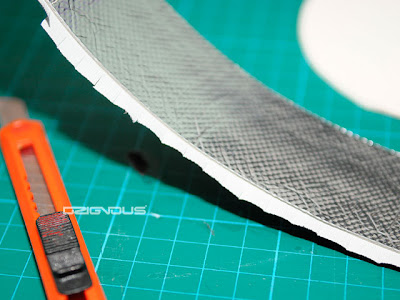 |
| © dzignous |
DOF, AFS, ETTL, APS-C/H, FX/DX etc etc... Wondering what the hell are those? Photography got lots in common with Singapore too (also acronyms-crazy, think PAP, ERP, HDB, PUB, CBD, COE...)
With some help from my fave Google, a list (not comprehensive) below to help you understand a tiny bit more...
---------------------------------------------------------------------------------------------------
A-DEP: Automatic depth of field
AdobeRGB: Color space with a wider color gamut than sRGB
(Suitable for print)
AE: Automatic exposure
AEB: Automatic exposure bracketing
AEL: Auto-exposure lock
AF: Auto focus
AF-I: Nikon's lenses with the focusing motor built into the lens barrel itself
AF-S: Nikon's silent-wave focusing motors, similar to Canon's USM motors
AI: Aperture indexing – Nikon's lenses which communicate lens aperture to camera body via mechanical coupling
AI-S: Nikon's AI lenses which also transmit linear aperture information
APS-C: Advance-Photo-System, Type-C, either 1.5x crop sensor in Nikon/Sony/Pentax or 1.6x in Canon
APS-H: 1.3x crop sensor used in Canon 1D series (with high fps shooting)
ASA: American Standards Association - now known as ISO (See ISO)
ATX: Advanced Technology-Extra (lens technology by Tokina
Av: Aperture Priority exposure mode (same as A mode)
AWB: Automatic white balance
B: Bulb mode – allows for the shutter to be open as long as the shutter button is pressed
BMP: Bitmap – a type of image format
CA: Chromatic aberration - Color fringing seen at high contrast areas
CCD: Charged coupled device (Type of sensor usually found in DSLR and medium format cameras)
CF: Compact Flash - Common type of memory card physically larger than SD
CMOS: Complimentary Metal Oxide Semiconductor (Type of digital sensor typically used in Canon/Nikon hi-end cameras)
CMYK: Cyan-magenta-yellow-black (printing)
CPL: Circular polarizer
CRW: Canon Raw format
CR2: Canon Raw format
DF: Sigma's dual focus system
DG: Sigma lenses with special coatings to help minimize reflections from digital sensors
Di: Tamron lenses with optics designed to combat the increased reflectivity of digital sensors
Di-II: Tamron's lenses for small-sensor digital cameras
DNG: Digital Negative (Adobe's open Raw format)
DOF: Depth of Field - The range of sharp focus in a picture
DPI: Dots per square inch - A measure of printing resolution
DSLR: Digital Single Lens Reflex camera
DX: Lens designed for use in cropped sensor cameras
ED: Extra-low Dispersion glass elements (helps correcting chromatic aberrations)
EF: Electronic Focusing ( Canon's autofocus lens mount)
EF-s: Electronic Focus Short Backfocus (Canon l.6x crop DSLR lenses)
EOS: Canon's electronic optical system
E-TTL: Canon's evaluative through-the-lens flash metering
E-TTL II: Canon's second generation through-the-lens flash metering technology
EV: Exposure value
EX: Excellence (Sigma's high-end lenses
)
EXIF: Exchangeable image file format
F-stop: Aperture
FD: Canon's older lens mount system
FE: Fisheye lens
FEB: Flash exposure bracketing
FEC: Flash exposure compensation
FEL: Flash exposure lock
FF/FX: Full frame - 24mm x 36mm DSLR sensor size, the size of 35mm film
F-mount: Nikon's lens mount
FPS: Frames per second - how many pictures per second the camera can capture
G: Nikon's electronically controlled lenses which lack aperture rings on the lens barrel
GB: Gigabyte – 1,000 Megabytes
GND: Graduated neutral density filter
GPS: Global positioning system
HDR: High dynamic range
HSM: Sigma's quiet, fast focusing motor (similar to Canon's USM/Nikon's AFS)
ICC: International Color Consortium - Color reproduction abilities of devices, often used to calibrate monitors and printers
IR: Infrared - Light below the visible spectrum when photographed
IF: Internal focusing lenses
IS: Canon's Image Stabilization lenses
ISO: International Standards Organization
JPEG/JPG: Joint Photographic Experts Group - Most commonly used image format
K: Kelvin - Scale used to measure color temperature
K-mount: Pentax lens mount
LCD: Liquid crystal display
LED: Light emitting diode
Li-ion: Lithium ion - Type of rechargeable battery with no memory effect, slow loss of charge when not in use
M: Manual exposure - the user manually selects both the aperture and shutter speed
MF: Medium format
MF: Manual focus
MUP: Mirror lock-up - A technique to flip up the SLR mirror before exposure and minimize vibrations due to mirror slap
MP: Megapixel
MTF: Modulation transfer function - Measuring lens sharpness
ND: Neutral density filter - Dark filter which blocks light and allows for slower shutter speeds
NEF: Nikon Electronic File - Nikon's proprietary Raw format
OIS: Sigma's Optical Image Stabilization lenses
P: Program mode - Automatic exposure mode where the camera selects both the aperture and shutter speed
P&S: Point & Shoot camera
PC: Perspective control - Lenses which have the ability to tilt, shift, rise
PNG: Portable network graphics - A non-proprietary lossless image format
PPI: Pixels per inch
ProPhoto RGB: Large color space featuring a color gamut larger than that of sRGB and AdobeRGB
PS: Adobe Photoshop
PSD: Photoshop Document - Adobe Photoshop's native file format
RAW: Unprocessed data, allowing for large amounts of control and high quality images
RGB: Red-green-blue - Three primary colors in additive color theory
SD: Secure Digital - Memory card physically smaller than compact flash
SDHC: Secure Digital High Capacity - A new standard allowing SD cards > 2 GB
SLR: Single lens reflex (Cameras with mirror-box, TTL metering)
TIFF/TIF: Tagged image file format - Uncompressed image file format (bigger file size than RAW)
TLR: Twin-lens reflex - A type of camera in which the viewfinder lens and the taking lens are separate optical systems
TTL: Through the lens - Metering system which works through the lens for ambient or flash
Tv: Shutter priority exposure mode
UD: Ultra-low dispersion glass - used to correct chromatic aberration
USM: UltraSonic Motor - Canon's fast and quiet focusing motor
UV Filter: Ultraviolet filter
UWA: Ultra-wide angle - Usually a lens with an angle of view greater than 90°
VR: Nikon's Vibration Reduction lenses
WA: Wide-angle lens - Focal length shorter than a 50mm lens with wider view
WB: White balance
X-sync: Flash sync speed indicating the fastest shutter speed that can be used with a flash


















































